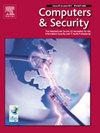基于用户评价的Android应用安全多维度评估
IF 4.8
2区 计算机科学
Q1 COMPUTER SCIENCE, INFORMATION SYSTEMS
引用次数: 0
摘要
随着Android应用程序的不断增多,Android应用程序中的恶意行为问题也日益严重。有些应用程序在设计上是敌对的,有些在使用中收集了过多的信息,并以用户意想不到的方式运行。现有应用程序的安全检测方法包括静态和动态分析,存在检测方法单一、检测集成差、未考虑用户期望等局限性。因此,本文基于Android应用的行为,提出了一种结合静态分析、动态分析和用户主观期望的综合移动应用检测机制。为了提高基于权限的静态检测的细粒度,本文在静态检测中引入了权限相关性。此外,动态分析中的历史置信度量化了应用程序的行为特征,并补偿了低效率。静态分析可以指导动态分析,提高准确性和覆盖率。我们在评估过程中引入了对私人对象的主观期望和全面的监测机制。基于Android实际应用的实验验证了该方案的有效性。根据Android应用测试分析,提出的机制可以根据不同用户对隐私的关注程度对软件安全性进行量化和评估。实验表明,该系统对恶意行为的识别率达到了97.27%。所提出的机制比仅静态分析更准确,比仅动态分析更高效,并且可以根据用户的主观预期调整危险程度。本文章由计算机程序翻译,如有差异,请以英文原文为准。
Multi-dimensional assessment for Android application security based on users’ evaluation
With the increasing Android applications, the problem of malicious behavior in Android applications is growing. Some applications are hostile in their design, and some collect excessive information in use and behave in a user-unexpected way. Existing application’s security detection methods include static and dynamic analysis, with limitations such as single detection methods, poorly integrated detection, and failure to consider user expectations. Therefore, based on the behavior of the Android application, this paper proposes a comprehensive mobile applications detection mechanism combining static analysis, dynamic analysis, and users’ subjective expectations. This paper introduces permission relevancy in static detection to enhance the fine grain of permission-based static detection. Moreover, the historical confidence in dynamic analysis quantitates the applications’ behavior characteristics, and the low efficiency is compensated. Static analysis can guide the dynamic analysis and improve the accuracy and coverage rate. We introduce subjective expectations to private objects and a comprehensive monitoring mechanism during the assessment process. An experiment based on real-world Android applications is carried out to validate the scheme in this paper. According to the Android application test analysis, the proposed mechanism can quantitate and assess the software security based on different users’ degrees of privacy concerns. The experiments demonstrate that our proposed system achieves a recognition rate of 97.27% for identifying malicious behaviors in test application. The proposed mechanism is more accurate than only static analysis, more efficient than only dynamic analysis, and the degree of danger can be adjusted according to the user’s subjective expectations.
求助全文
通过发布文献求助,成功后即可免费获取论文全文。
去求助
来源期刊

Computers & Security
工程技术-计算机:信息系统
CiteScore
12.40
自引率
7.10%
发文量
365
审稿时长
10.7 months
期刊介绍:
Computers & Security is the most respected technical journal in the IT security field. With its high-profile editorial board and informative regular features and columns, the journal is essential reading for IT security professionals around the world.
Computers & Security provides you with a unique blend of leading edge research and sound practical management advice. It is aimed at the professional involved with computer security, audit, control and data integrity in all sectors - industry, commerce and academia. Recognized worldwide as THE primary source of reference for applied research and technical expertise it is your first step to fully secure systems.
 求助内容:
求助内容: 应助结果提醒方式:
应助结果提醒方式:


